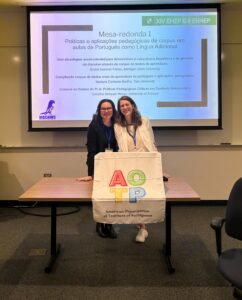By Dr. Amanda Lanier, MAFLT Director – Friday, March 13, 2020
Friends, colleagues, students, parents of small children, lend me your ears: there are no easy answers. Education is changing before our eyes, and some of those changes will last. Some of them will not. Going remote quickly is going to tax your patience, your learning abilities, your discipline, and your derriere as you spend a lot more time in front of a screen. Nevertheless, it is possible to offer high-quality and engaging instruction in an online space, and you may even find that there are some new additions to your toolkit that you want to keep even when the classroom doors open again.

Latest Posts on Dr. Lanier’s personal site
The MAFLT program will change very little in the weeks to come. We are already fully online and spread across almost 40 states, a dozen countries, and 19 languages. The main differences I anticipate are that I am going to incorporate more synchronous virtual meetings, since students’ hours are more flexible, and I am asking instructors to look for ways to re-purpose assignments so that we can create resources and advice for other foreign language teachers.
Confessions of an Online Professor
In the meantime, I am hearing two big sets of arguments from those who are “in the know” when it comes to online learning. One is that going remote with courses that are typically face to face (F2F) is not the same as designing high-quality online instruction or distance-based educational experiences.
Chronicle of Higher Ed: Going Online in a Hurry
While we all want to be as helpful as possible, online-teaching advocates are unanimous in cautioning that these options for salvaging the semester are not to be confused with the kind of intentional design that’s needed to create high-quality online offerings over the long run.
Michelle D. Miller – 9 March 2020
The other argument I have seen is that even if you are enthusiastic about adding new tools to your toolkit right now, excellence in online learning might not be the right priority right now. As this experienced online educator explains, it may be in our best interests to hold back.
For my colleagues who are now being instructed to put some or all of the remainder of their semester online, now is a time to do a poor job of it. You are NOT building an online class. You are NOT teaching students who can be expected to be ready to learn online. And, most importantly, your class is NOT the highest priority of their OR your life right now. Release yourself from high expectations right now, because that’s the best way to help your students learn.
Rebecca Barrett-Fox – March 2020
She goes on to provide the caveat that “this advice is very different from that which I would share if you were designing an online course. I hope it’s helpful, and… I hope it helps you understand the labor that is required in building an online course a bit better. ” It’s a lot of labor. Go ahead and accept that. But, first, pause, and think about what labor will matter the most. That is my mantra, and not being inclined to aim for the minimum, I have to repeat it to myself a lot!
The WordPress version of our MAFLT website only launched a month ago, and I am still figuring out how to use the News and Latest Posts to greatest benefit, but given the state of this semester, I will keep adding resources and offering support where I can.
Hopefully a lot of that will come from our terrific network of MAFLT students and alumni, so if you are one of them – or know one – schedule some of their valuable time now! They’ve worked hard, and they continue to work toward better foreign language teaching for everyone – online, hybrid, face-to-face, or some other way that we have yet to imagine.


